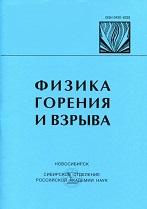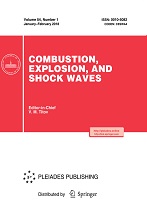|
Mathematical model of critical condition for friction ignition
X.-Y. Liangab, G.-B. Mib, P.-J. Lia, J.-X. Caob, X. Huangb
a National Center of Novel Materials for International Research, Tsinghua University, 100084, Beijing, China
b Aviation Key Laboratory of Science and Technology on Advanced Titanium Alloys, AECC Beijing Institute of Aeronautical Materials, 100095, Beijing, China
Abstract:
The effect of friction on the critical temperature of ignition is considered by establishing the friction ignition model based on the principle of the heterogeneous reaction of Semenov. The effects of the oxygen concentration, flow velocity, friction force, and contact area on the critical temperatures of two fireproof titanium alloys (TB12 and TF550) are studied. The results show that the critical temperature decreases with an increase in the oxygen concentration and increases with the flow velocity. The critical temperature increases approximately linearly with an increase in the friction force and decreases exponentially with an increase in the contact radius. As the contact radius increases to 0.007 m, the critical temperatures of TF550 and TB12 are 1029 and 1016 K, respectively. As the contact radius reaches 0.014 m, the critical temperatures of TF550 and TB12 are 962 and 960 K, respectively
Keywords:
titanium alloys, critical temperature, mathematical model, heterogeneous reaction.
Received: 16.08.2019
Revised: 18.12.2019
Accepted: 15.05.2020
Citation:
X.-Y. Liang, G.-B. Mi, P.-J. Li, J.-X. Cao, X. Huang, “Mathematical model of critical condition for friction ignition”, Fizika Goreniya i Vzryva, 56:5 (2020), 99–105; Combustion, Explosion and Shock Waves, 56:5 (2020), 585–591
Linking options:
https://www.mathnet.ru/eng/fgv712 https://www.mathnet.ru/eng/fgv/v56/i5/p99
|


| Statistics & downloads: |
| Abstract page: | 23 |
|





 Contact us:
Contact us: Terms of Use
Terms of Use
 Registration to the website
Registration to the website Logotypes
Logotypes








 Citation in format
Citation in format 